|
Sullla:
*Deep breath* OK, let's do this.

All of my tactical movements at sea this turn were based on getting every ship into the battle. There was only one ship out of range to attack any of Chevalier's ships, the injured frigate next to Nan Madol, and even that unit could attack the embarked English musket next to it. Every other unit was focused on killing the maximum possible number of English ships before they had a chance to attack me. For example, this frigate could only reach two ships: the English frigate next to the pearls (which is the one that I was originally planning on targeting) or this other frigate that was revealed in the fog when I moved forward. Now, should I have sat back and tried to defend with my ship while waiting for battleships? Unfortunately that wasn't an option. Chevalier's ships all move faster than mine and frigates are much better on the attack than on the defense. If I pulled back to Nan Madol and waited, he would just get the first strike instead of me. I really did have no choice but to attack and inflict maximum damage. I went for the southern frigate next to Midway because it didn't get any bonus from the nearby Great Admiral.

Then this ironclad finished it off. My frigate that attacked over is surely dead, but Chevalier will need to use two of his own attacks to sink it. The ironclad is probably OK: this guy is the only one of my ironclads with double promotions, enough to get the generic +7 strength (Embolon) that all my ironclads have plus the anti-ranged promotion (Reinforced Hull) for +10 strength against ranged attacks. In other words, this ironclad defends at 77 strength against those frigates, who will be attacking at 60 strength with the Great Admiral (average damage around 15 per shot). I think this unit will probably not be targeted, although if Woden wants to use five attacks to sink it I'm fine with that. (Woden will be playing the next few turns for Chevalier, for the curious.)

I chose not to go after the Great Admiral in the east. While I could have sunk the frigate that it was protecting, that would only teleport it over to Lepanto and it would be right back into the action again. My larger strategic goal was to pull the fighting over to the western side of the ocean, both to help protect my cities and to draw the English units further away from their own cities. That way if I do kill a Great Admiral, it will take much longer to return back to combat. Anyway, I had range enough to reach this frigate sitting off by itself and shoot for 52 damage.

Then finish it off with this frigate. Again, notice how I'm pulling these units over to the west as much as possible. The one frigate off in the east is completely doomed, but I was trying to create a formation with everything else.
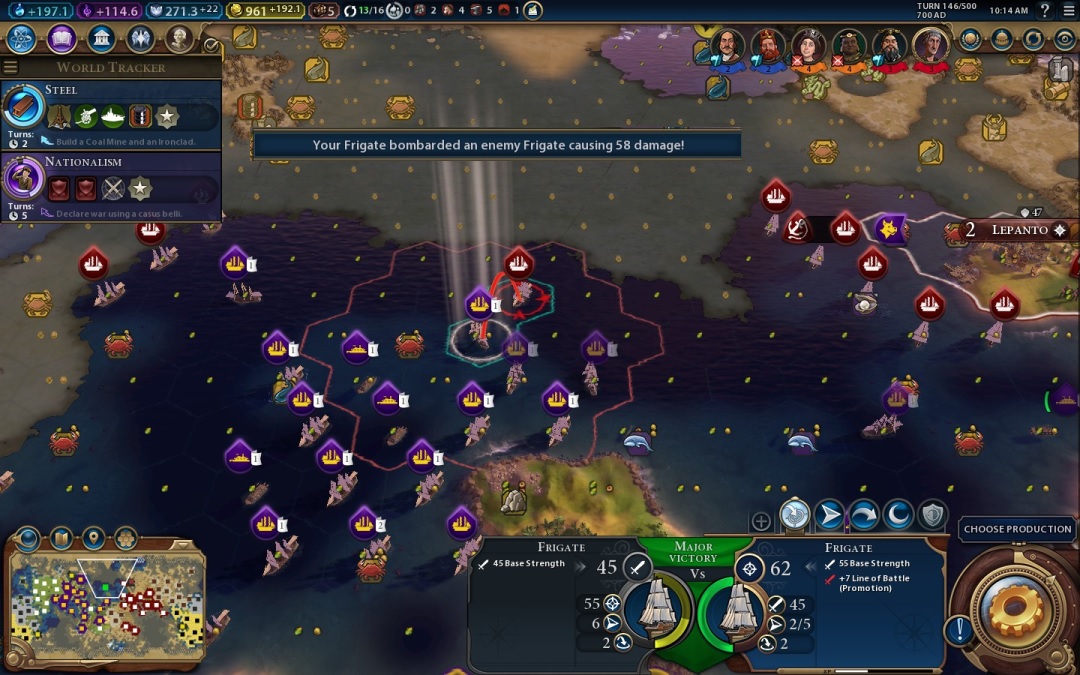
Another frigate, another shot for 50+ damage. This is the power of the Terracotta Army in action: line of battle on every single frigate meant 62 strength attacks instead of 55 strength attacks. That pulled the damage range per shot up noticeably, from 36-54 damage (average 45) at +10 strength up to 47-71 damage (average 59) here at +17 strength. I could confidently assume that two attacks would kill every defending frigate. Without the extra damage from the promotion, I would not have been able to two-shot these units and the combat would have been much more difficult.
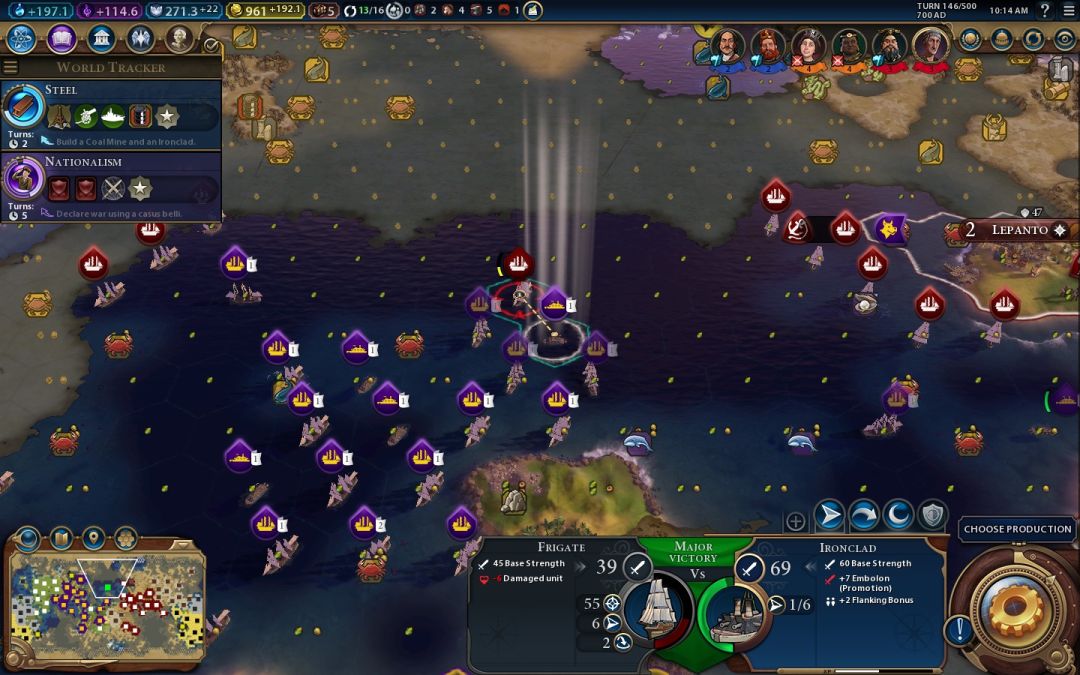
I finished off this frigate with an ironclad, taking 9 damage in the process. These units here would end up becoming the eastern end of my naval formation by the time this combat was over.

Next I wanted to go after the Sea Dogs, but what's this? They disappeared!  Apparently they really do become invisible when you're at war; even mousing over their tiles doesn't show them on the screen. Scary stuff, good thing that I already found the location of this pair. I moved up another frigate, and there they were: Apparently they really do become invisible when you're at war; even mousing over their tiles doesn't show them on the screen. Scary stuff, good thing that I already found the location of this pair. I moved up another frigate, and there they were:

Both of them, just as expected. Sea Dogs are more frail than frigates and rely on stealth for safety. This one practically melted when a frigate engaged it, although unfortunately I didn't have quite enough damage to get into the one-hit kill area. The two frigates highlighted here combined to take down the eastern of the two Sea Dogs.

Now I shifted focus over to the western half of the ocean. I had just barely enough range to get this enemy ship into firing distance to make this attack. This was one of the two frigates chopped out of Parma, and the lack of a promotion was instantly notable in terms of the damage dealt. Only 47 damage here and that roll was slightly above average (45 damage). Fortunately it was still enough to ensure a two-hit kill:
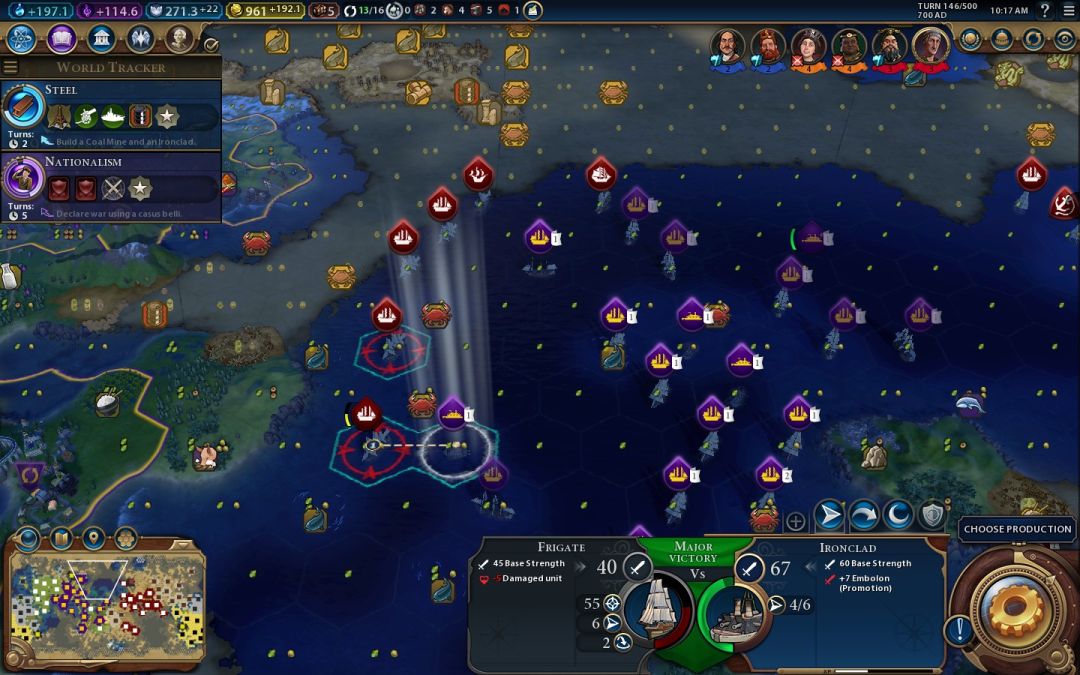
I used an ironclad here for the finishing blow. Now why an ironclad you might ask? The simple answer is that I'm looking ahead to the next round of combat and trying to minimize damage taken on my ironclad. Unlike the ranged frigates, my ironclad takes damage every time that it attacks and therefore I had an incentive to use ironclads to finish off crippled attackers. This is backwards from what you might think, where the melee unit would go after the strongest attacker, but actually not so much here. Both the ironclads and the frigates shared the same 62 strength on their attacks so I basically "babied" the ironclads to keep their health as high as possible for the next round of fighting. Keep in mind too that melee units have to deal with defending support bonuses while ranged units get to ignore them. I didn't want to attack into the teeth of that formation up there to the northwest where the defending unit would get +6 or +8 strength. My frigates could attack the same unit without any strength bonus for the defender.

This worked out so well that I repeated the process again. First the non-promoted frigate...
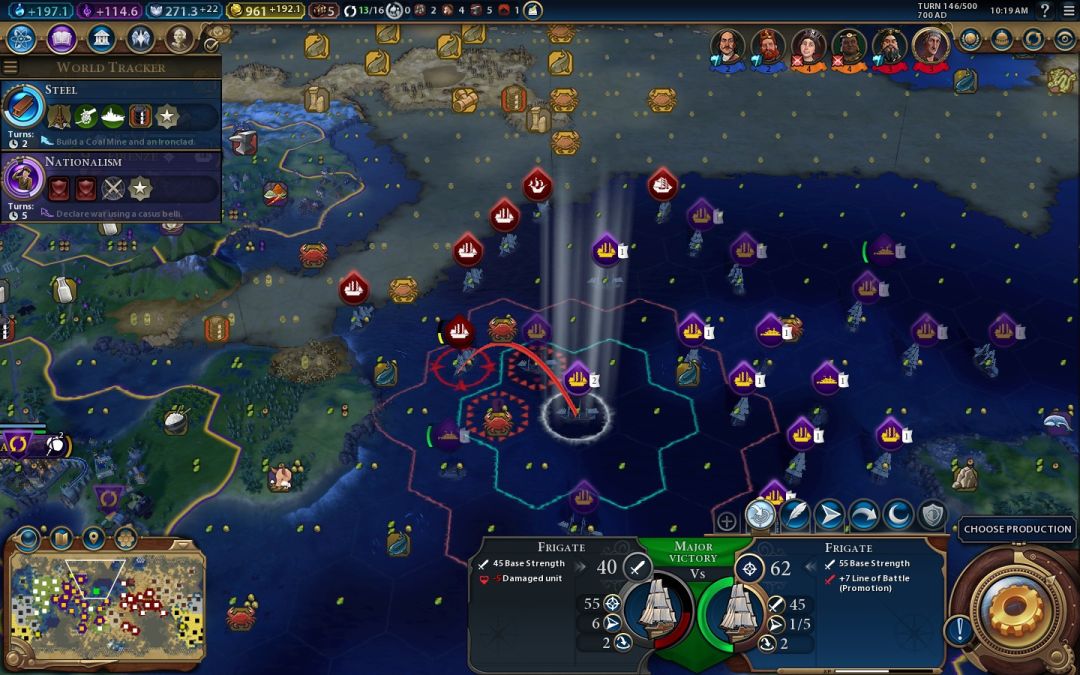
Then I was going to use an ironclad, only to realize that this double promoted frigate couldn't attack any other targets. It was this enemy ship or nothing. Don't worry about me "wasting" the double promotion frigate, the second promotion just provides a combat bonus against land units. Irrelevant in this context.

Have you noticed that more ships kept appearing as I sank more and more English units? This was concerning but no choice now other than to soldier on. This frigate pictured could only reach the Sea Dog and crippled it with a shot.

Followed by this frigate hitting an English ship with a Great Admiral bonus. Hmmm, must be still more units in the fog to the west back there. It looked like I still had enough attacks to kill this unit, the Sea Dog, and then maybe one or two more units with my ironclads, although I wasn't eager to attack with the melee units into the middle of that English formation.

The last attack revealed this ship, which I saw did *NOT* get the Great Admiral bonus. I pounced on that chance, first with this frigate...
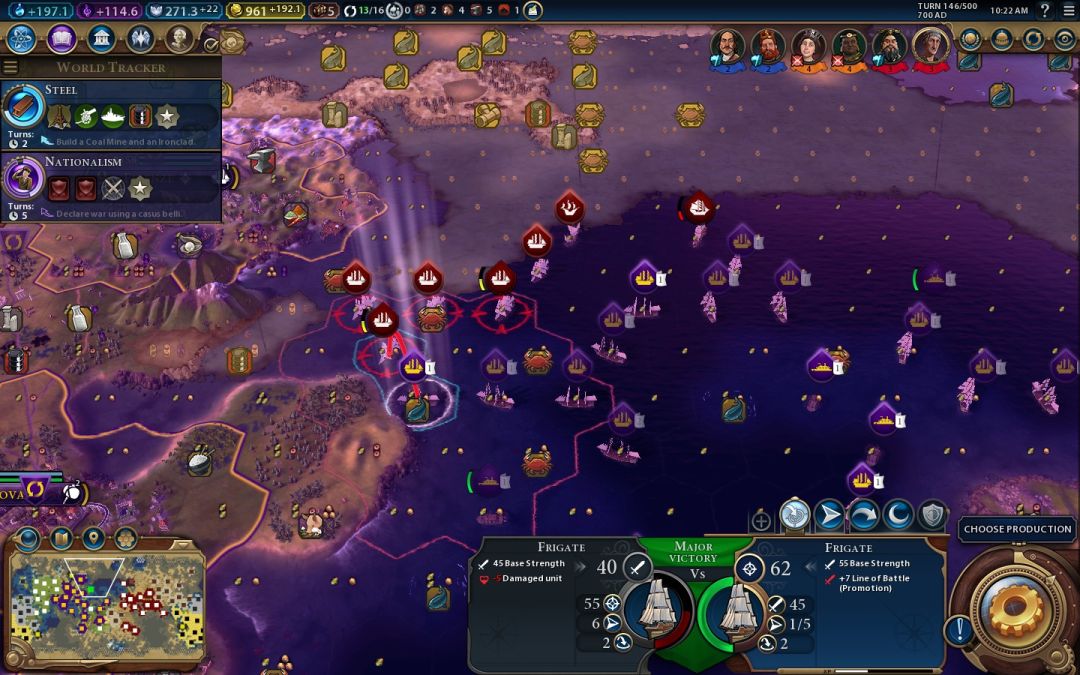
And then sunk with a second frigate. Note that I wasn't leaving any of these units alive but in critical condition. You want to finish kills in Civ6 if at all possible. Do not leave units alive but redlined. In Civ4, a redlined unit is nearly worthless in combat, attacking at a fraction of its strength when full health. In Civ6, a near-dead unit just has a -9 strength penalty, that's all. If Woden reduces one of my frigates to 1 HP, it will still attack at 53 strength and that's pretty darn good! I was making sure to get complete kills on each and every enemy unit. My promotions gave me just enough damage to two-shot everything.

Next I moved my ironclad forward, and oh my god, are you kidding me?!  How many ships did Chevalier build on this ocean?! Stupid Venetian Arsenal, sigh. Well, I still had room for some more kills on my turn. This frigate, the one that had moved a tile west at the very beginning of the turn to spot the English ships, slid over to the east and finished off the Sea Dog. How many ships did Chevalier build on this ocean?! Stupid Venetian Arsenal, sigh. Well, I still had room for some more kills on my turn. This frigate, the one that had moved a tile west at the very beginning of the turn to spot the English ships, slid over to the east and finished off the Sea Dog.

That opened up space in my naval formation for this frigate to move up and finish off the injured frigate from before. And there was one injured enemy frigate up there in the north, presumably from barbarian activity by that camp. (Thanks barbarians!) That was the last target for this turn, using my ironclads to hit another ship out of Great Admiral range.
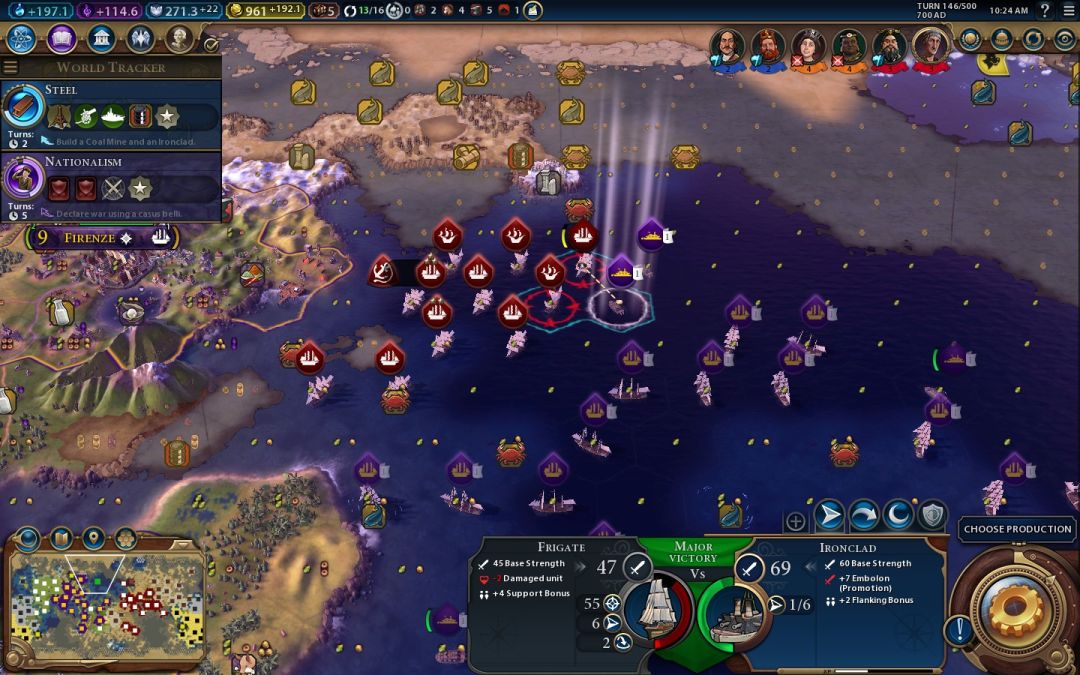
Note the +4 support bonus. This is why I tried to have my ironclads pick off exposed enemy ships to avoid the defender's strength bonus. Oh, and there's the Great Admiral behind a frigate ARMADA, jeez. That was Chevalier using one of his Great Admirals for their sacrificial bonus, only he gets to use it twice because he built the Mausoleum way back in the day. Man oh man, it is not going to be fun dealing with that unit and its 77 ranged strength. I just pray that it will roll low and not one-shot a frigate on its turn.

Anyway, the other ironclad finished off the damaged English frigate and that brought the naval portion of my turn to a close.

All told, I sank 8 frigates and 2 Sea Dogs this turn. The first mover advantage in combat is huge and I did my best to make the most of it. The real MVP here was the Terracotta Army; without the extra promotions, this would not have been possible. Building that wonder may have just saved my entire game. And yet, despite killing 550 points of naval power rating in a single turn, England still has 5 frigates in the east, 6 frigates in the west, and 3 additional caravels. I also spotted builders at Lepanto and Midway preparing to chop/harvest out additional ships, although fortunately England is down to "only" 3 forests and 1 stone remaining over there. That would normally convert into 1 frigate per stone and 0.75 frigates per forest, or about 3 ships, but of course with Venetian Arsenal that will become 6-7 more frigates. That wonder is really, really dumb. In retrospect it should have been banned for this map. Settling two junk cities and harvesting/chopping should not produce close to 15 modern ships for one player.
This upcoming turn is going to be brutal for me. I expect to lose about 6 frigates, and anything less than that would be a very pleasant surprise. I do have 4 frigates completing between turns and a pair of caravels racing up from the southern ocean that can upgrade into ironclads along the way and help out. With some battleship upgrades, I think that I'll eventually prevail in this battle, but it's going to be a bloody mess. I think that I played this turn just about perfectly and it's still going to be nasty. Crossing fingers for Woden to make some tactical errors somwhere at sea on his turn...
One last note: these turns are starting to eat up too much time. I spent most of my day playing this turn, and while they won't all be this bad, the game is simply taking too long. I'm wearing out on this game and its daily grind. I really hope that we're getting close to the end; it's been over six months now, and whatever anyone believes, I wasn't looking to take on this commitment when I filled in for BrickAstley. Hopefully we can smash the rest of the English navy and maybe that will be enough for the other players to call it quits.
|
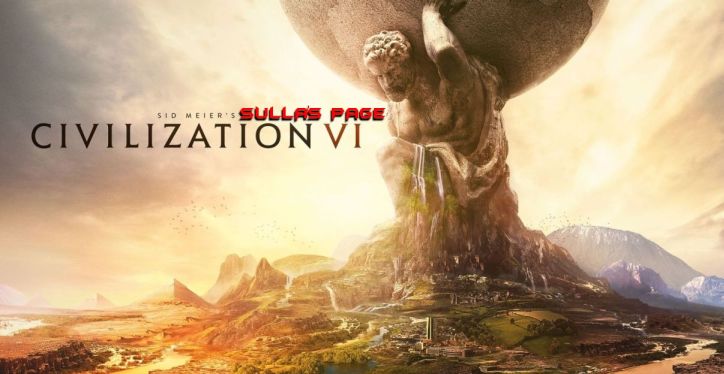




 This was only the beginning and the war would increasingly drag on the combatants over the course of the following days. There would be no easy victory for either side in this conflict.
This was only the beginning and the war would increasingly drag on the combatants over the course of the following days. There would be no easy victory for either side in this conflict.


